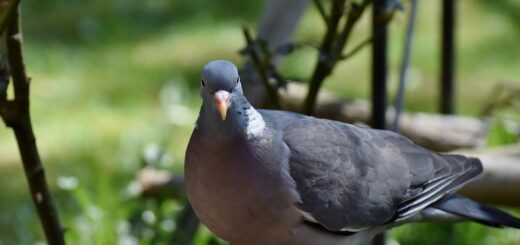Chaffinch
The Charming Chaffinch: A Guide to the Colorful Bird
One of the most common and widely distributed birds in Europe, the chaffinch is a delightful little creature that can be found in a variety of habitats, from woodlands to gardens. With its vivid plumage and cheerful song, the chaffinch is a favorite among birdwatchers and nature enthusiasts. In this article, we will explore the fascinating world of the chaffinch, from its physical characteristics to its behavior and habitat.
Physical Characteristics of the Chaffinch
The chaffinch (Fringilla coelebs) is a small passerine bird that belongs to the finch family, Fringillidae. It is easily recognizable by its colorful plumage, with the males sporting a striking combination of pink, blue, and white feathers on their chest and head, and a slate-blue back and wings. The females, on the other hand, have a more subdued appearance, with a brownish-grey plumage and a hint of green on their wings. Both sexes have a distinctive white wing-bar, which is visible in flight.
The chaffinch is also known for its distinctive song, which has been described as a cheerful and melodic pink-pink-pink followed by a rapid chaff-chaff-chaff call. This song is most commonly heard during the breeding season, when the male chaffinches use it to attract mates and establish territories.
| Physical Characteristics | Description |
|---|---|
| Size | The chaffinch is approximately 14 cm (5.5 in) in length, with a wingspan of 24.5–28.5 cm (9.6–11.2 in). |
| Diet | Chaffinches primarily feed on seeds, insects, and fruits. |
| Habitat | They can be found in a variety of habitats, including woodlands, parks, gardens, and farmland. |
Feeding Habits
Chaffinches are primarily granivorous, meaning they feed on seeds and grains. They have a special adaptation in their beak that allows them to efficiently crack open seeds and extract the nutritious contents. In addition to seeds, they also consume a variety of insects, especially during the breeding season when they need the extra protein to feed their young.
During the winter months, chaffinches often form large flocks and can be seen foraging for food in fields and hedgerows. They are particularly fond of beech mast and can often be found in beech woodlands where they feast on the fallen seeds.
Behavior and Habitat
Chaffinches are highly adaptable birds and can be found in a wide range of habitats, from woodlands and forests to parks, gardens, and farmland. They are particularly fond of mixed woodlands with a variety of tree species, as this provides them with ample food and nesting opportunities.
During the breeding season, male chaffinches become very territorial and will defend their chosen patch of woodland or hedgerow from rival males. They do this by singing from prominent perches and engaging in aerial displays, such as fluttering and gliding, to attract females and deter competitors.
The females build their nests in the dense foliage of trees and shrubs, using a combination of twigs, moss, and grass, and lining the inside with soft materials such as feathers and hair. They lay a clutch of 4-5 eggs, which they incubate for around 13 days. Once the chicks hatch, both parents take turns feeding them until they are ready to fledge.
Conservation Status
Although the chaffinch is still a common and widespread species, there have been some concerns about its declining numbers in certain parts of Europe. This is primarily due to habitat loss and fragmentation, as well as changes in agricultural practices that have reduced the availability of food and nesting sites for the birds.
Conservation efforts are underway to address these issues and ensure the long-term survival of the chaffinch. These include initiatives to create and maintain suitable habitats for the birds, such as planting hedgerows and establishing wildlife-friendly farming practices. Additionally, research is being conducted to better understand the factors affecting chaffinch populations and to develop effective conservation strategies.
Conclusion
The chaffinch is a charming and charismatic bird that has captured the hearts of birdwatchers and nature enthusiasts alike. With its colorful plumage, delightful song, and endearing behavior, it is no wonder that the chaffinch is such a beloved species. By learning more about these fascinating birds and supporting conservation efforts, we can ensure that future generations will continue to enjoy the sight and sound of the beautiful chaffinch.
In conclusion, the chaffinch is a delightful little bird that brings joy and color to our woodlands, gardens, and parks. With its striking plumage, melodic song, and interesting behavior, it is a species that never fails to captivate and inspire. By understanding more about the chaffinch and the challenges it faces, we can work together to ensure its continued presence in our natural world.


